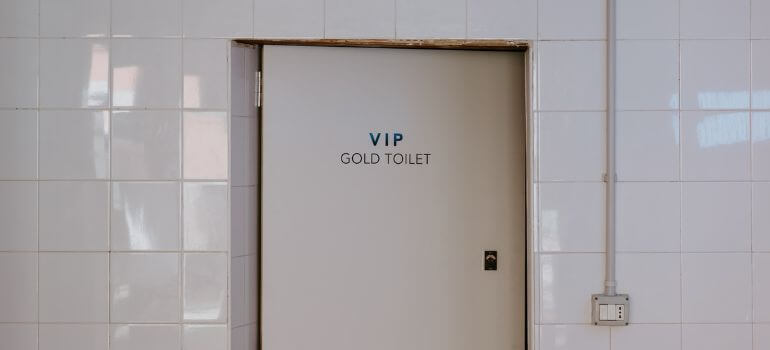Doors play a pivotal role in the overall design and functionality of interior spaces, with bathrooms being no exception. The choice between a pocket door and a regular door can significantly impact not only the aesthetics but also the efficiency of a bathroom. In this article, we’ll delve into the characteristics, advantages, and considerations of both pocket doors and regular doors, helping you make an informed decision for your bathroom.
Introduction
Doors are more than just functional barriers; they contribute to the ambiance of a room. When it comes to bathrooms, the choice between a pocket door and a regular door is a crucial decision that influences not only the overall design but also the space utilization and user experience.
Understanding Pocket Doors
Pocket doors, with their unique sliding mechanism, offer a space-saving solution. These doors slide seamlessly into the wall, providing a clean and unobtrusive look. The advantages of pocket doors extend beyond aesthetics, making them a popular choice in modern interior design.
Regular Doors: Traditional Choice
Regular doors, the traditional and familiar option, come in various styles and materials. While they are widely used in different parts of a home, their suitability for bathrooms comes with its own set of pros and cons, which we will explore in this section.
Space Efficiency
One of the primary considerations when choosing a bathroom door is space efficiency. Pocket doors excel in this aspect, as they eliminate the need for clearance space, making them ideal for smaller bathrooms. We’ll compare how pocket doors utilize space more effectively than regular doors.
Design Aesthetics
The design of a bathroom door can significantly influence the overall aesthetics of the space. Whether you opt for a pocket door or a regular door, each choice brings its own visual appeal to the design table.
1. Pocket Doors:
- Sleek and Minimalist: Pocket doors are renowned for their sleek and minimalist design. When fully open, they seamlessly disappear into the wall, creating a clean and unobtrusive look. This design feature is particularly advantageous in modern and contemporary bathroom themes.
- Space-Saving Elegance: The space-saving aspect of pocket doors adds an elegant touch to the overall bathroom design. It allows for more flexibility in arranging other elements within the space, contributing to an uncluttered and sophisticated appearance.
- Customizable Panels: Modern pocket doors come with customizable panels, providing an opportunity to integrate various materials, textures, and finishes. This customization allows homeowners to match the door design with the overall aesthetic of the bathroom.
2. Regular Doors:
- Classic and Timeless: Regular doors, with their familiar hinged design, exude a classic and timeless charm. They are versatile and can complement various interior design styles, including traditional, rustic, and transitional themes.
- Diverse Material Options: Traditional doors offer a wide range of material options, from solid wood to glass panels, allowing for diverse design choices. The variety of finishes and styles make it easy to find a regular door that aligns with the desired aesthetic.
- Architectural Detailing: Regular doors often feature architectural detailing, such as raised panels or decorative molding, enhancing the overall visual appeal of the bathroom. These details can contribute to a more intricate and personalized design.
3. Considerations for Both:
- Color Coordination: Both pocket doors and regular doors can be painted or stained to match the color scheme of the bathroom. This allows for seamless integration into the overall design, creating a cohesive and harmonious visual experience.
- Hardware Accents: Paying attention to the hardware, such as handles and locks, can add stylish accents to both door types. Choosing hardware that complements the bathroom’s design enhances the overall aesthetic appeal.
4. User Experience:
- Pocket Doors: Users often appreciate the modern and space-saving aesthetics of pocket doors. The clean lines and unobtrusive appearance contribute to a contemporary and stylish bathroom ambiance.
- Regular Doors: Traditional door designs appeal to those who prefer a timeless and classic look. The versatility of regular doors allows for easy integration into various design themes, offering a sense of familiarity and comfort.
Installation and Maintenance

Understanding the installation process and long-term maintenance requirements is crucial. We’ll guide you through the steps involved in installing both pocket and regular doors, as well as the maintenance considerations to ensure their longevity.
Privacy and Sound Isolation
Ensuring privacy and sound isolation in a bathroom is essential for a comfortable and functional living space. When choosing between pocket doors and regular doors, it’s important to consider how each option addresses these vital concerns.
1. Pocket Doors:
- Privacy: Pocket doors may raise concerns about privacy due to the potential gaps around the door edges. However, modern pocket doors often come with seals and privacy locks to mitigate this issue. It’s crucial to choose high-quality hardware and ensure proper installation to minimize visibility gaps.
- Sound Isolation: Achieving effective sound isolation with pocket doors can be challenging. The sliding mechanism may allow for more sound transmission compared to the solid structure of regular doors. Consider additional measures, such as using heavy materials or installing soundproofing materials within the wall.
2. Regular Doors:
- Privacy: Traditional hinged doors are known for providing a standard level of privacy. The frame and solid construction minimize visibility gaps, ensuring a private and enclosed bathroom space. Choosing doors with effective locks enhances privacy further.
- Sound Isolation: Regular doors inherently offer better sound isolation compared to pocket doors. The solid structure helps reduce the transmission of sounds, making them a preferred choice for bathrooms where privacy and minimizing noise transfer are priorities.
3. Considerations for Both:
- Weather Stripping: Regardless of the door type, installing weather stripping can enhance both privacy and sound isolation. This additional measure helps seal gaps and prevents sound leakage, creating a more secure and quiet bathroom environment.
- Upgraded Hardware: Investing in high-quality locks and handles for both pocket doors and regular doors can significantly contribute to better privacy. Ensure that the chosen hardware provides a secure and reliable locking mechanism.
4. User Experience:
- Pocket Doors: Users of pocket doors in bathrooms often report satisfaction with privacy levels, especially when equipped with quality locks and seals. However, individual experiences may vary, and it’s essential to consider personal preferences.
- Regular Doors: Traditional doors offer a familiar and reassuring sense of privacy. Users generally find regular doors to be reliable in creating a fully enclosed and private space, contributing to a positive bathroom experience.
Cost Comparison
When it comes to choosing the right door for your bathroom, cost is a crucial factor that can significantly influence your decision. Both pocket doors and regular doors come with their own set of expenses, and understanding the cost breakdown can help you make an informed choice that aligns with your budget.
1. Initial Purchase Cost
- Pocket Doors: Pocket doors typically have a higher upfront cost compared to regular doors. The sliding mechanism and hardware contribute to this initial expense. However, the exact cost can vary based on the material, design, and brand.
- Regular Doors: Traditional hinged doors often have a lower initial purchase cost. The variety of materials available, such as wood, metal, or composite, allows for flexibility in pricing. Customizations may affect the overall cost.
2. Installation Expenses
- Pocket Doors: Installing pocket doors can be more labor-intensive and may require the expertise of a professional. The need to create a pocket in the wall adds complexity to the installation process, contributing to higher installation costs.
- Regular Doors: The installation of regular doors is generally more straightforward, which can result in lower labor costs. The simplicity of the process allows for easier DIY installation for those with basic carpentry skills.
3. Additional Hardware and Accessories
- Pocket Doors: Pocket doors often require specific hardware, including a track system and pulls. These additional accessories can add to the overall cost. Consideration should be given to the quality and durability of the hardware.
- Regular Doors: Hinged doors may also require hardware, such as handles, locks, and hinges. The variety of available options can cater to different budget ranges, allowing for customization based on preferences.
4. Maintenance Costs
- Pocket Doors: While pocket doors may have fewer exposed parts susceptible to wear, maintenance can be more challenging if issues arise with the sliding mechanism. Professional assistance may be required for intricate repairs.
- Regular Doors: Regular doors are generally easier to maintain, and repairs are often simpler. Replacing hardware or addressing issues with hinges and locks can be done more easily without specialized skills.
5. Long-Term Considerations
- Pocket Doors: The long-term cost considerations for pocket doors may involve periodic checks and potential adjustments to the sliding mechanism. Ensuring the track remains in good condition is crucial for sustained functionality.
- Regular Doors: Regular doors may require occasional refinishing or painting, depending on the material. Hinges and locks should be periodically checked and lubricated for smooth operation.
User Experience
Real-life experiences from individuals using pocket doors in their bathrooms can offer valuable insights. We’ll share feedback, concerns, and praises for both pocket doors and regular doors, helping you understand the user experience associated with each option.
Trends in Door Choices
As design trends evolve, so do preferences in door choices. We’ll explore current trends in bathroom door preferences, considering factors that influence homeowners in choosing between pocket and regular doors.
Decision-Making Guide
To assist you in making an informed decision, we’ll provide a comprehensive guide with factors to consider when choosing between pocket and regular doors. Asking yourself the right questions can lead to a door choice that perfectly fits your needs.
Real-Life Examples
Case studies showcasing successful installations of pocket doors in bathrooms will give you a practical understanding of their impact. Additionally, we’ll provide examples where regular doors complement and enhance the aesthetic appeal of bathrooms.
Environmental Impact
For environmentally conscious homeowners, the eco-friendly aspects of pocket doors might be a deciding factor. We’ll delve into the sustainability considerations of both pocket and regular doors, helping you make a choice that aligns with your values.
Maintenance Tips
Keeping your chosen door in optimal condition requires regular maintenance. We’ll share practical tips for maintaining the longevity and functionality of pocket doors, as well as maintenance routines for traditional doors in bathroom settings.
Conclusion
In conclusion, the choice between a pocket door and a regular door for your bathroom is a nuanced decision. By considering factors such as space efficiency, design aesthetics, installation and maintenance, privacy, cost, and user experience, you can make a choice that enhances both the functionality and beauty of your bathroom.
Frequently Asked Questions
Pocket doors are especially suitable for smaller bathrooms where space efficiency is crucial. However, their use can be adapted to larger bathrooms as well.
Regular doors provide a traditional level of privacy, but pocket doors can also be equipped with privacy locks and seals to address this concern.
The installation difficulty depends on factors like wall structure and existing features. Generally, both types require professional installation, but pocket doors may involve more intricate work.
Yes, changing a door style can be a relatively quick and transformative update. However, consider consulting with a professional to ensure compatibility with existing structures.
Yes, both door types come in eco-friendly materials. Consider options like reclaimed wood for regular doors and sustainable composites for pocket doors to reduce environmental impact.



